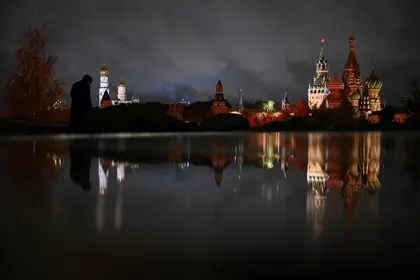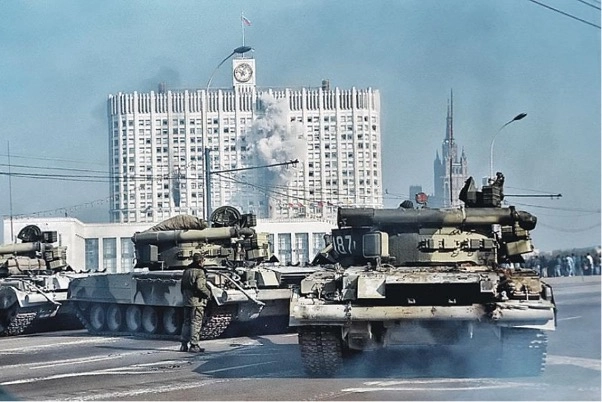Russia’s Federal Guard Service (FSO), which is responsible for the security of Russia’s top officials, has announced it will hold drills this week in Moscow, Nov. 1–3, with the unusual option of bringing unspecified armored vehicles.
For the first time, the FSO says it may deploy armored vehicles, provided by the National Guard Forces Command, to several key government buildings including the Government House (Moscow’s own “White House”), the complex of the presidential administration, as well as the two houses of Russia’s parliament the Federation Council and the State Duma.
JOIN US ON TELEGRAM
Follow our coverage of the war on the @Kyivpost_official.
The FSO stated that events at these locations will address “practical issues of service activity,” in cooperation with law enforcement and emergency services and that “there are no plans to introduce any restrictions on the movement of citizens.”
Previous exercises, including that of Oct. 25 – 27, 2022, did not include armored vehicles but focused on counter-terrorism activities and extinguishing fires, providing emergency medical care, crowd control and arresting offenders.
Against the persistent but as yet unfounded rumors on social media that President Putin has died and a “palace coup” is underway, this year’s plans could be reminiscent of the events that led to the 1991 Soviet rebellion against President Gorbachev and the 1993 “counter-coup” by President Yeltsin.

Confusion Over Which Russian Spy Was Injured by Booby-Trapped Car Bomb
The 1991 August Coup was a failed attempt by hardliners of the Soviet Union’s Communist Party to forcibly seize control of the country and force the President to resign.
Around 4,000 troops, 350 tanks and 300 armored personnel carriers took up positions around government buildings in Moscow.
The coup failed after three days as the city became flooded with civilian protestors causing the plotters to back down. It did, however, lead to the final collapse of the Soviet Communist Party and the USSR.
In September 1993, a constitutional crisis arose between President Boris Yeltsin, who had succeeded Gorbachev, and Russia’s parliament which occupied Moscow’s Government House.
In response after weeks of wrangling, Yeltsin dissolved parliament in October and declared presidential rule by decree.
Russian tanks fire on Moscow’s government house, Oct. 6, 1993. Photo: US National Security Archive
The crisis came to an end when tanks opened fire on the Government House and arrested the lawmakers on Oct. 6. For many this marked the final death of Russia’s short-lived democracy and the autocracy that brought Putin to power.
You can also highlight the text and press Ctrl + Enter







